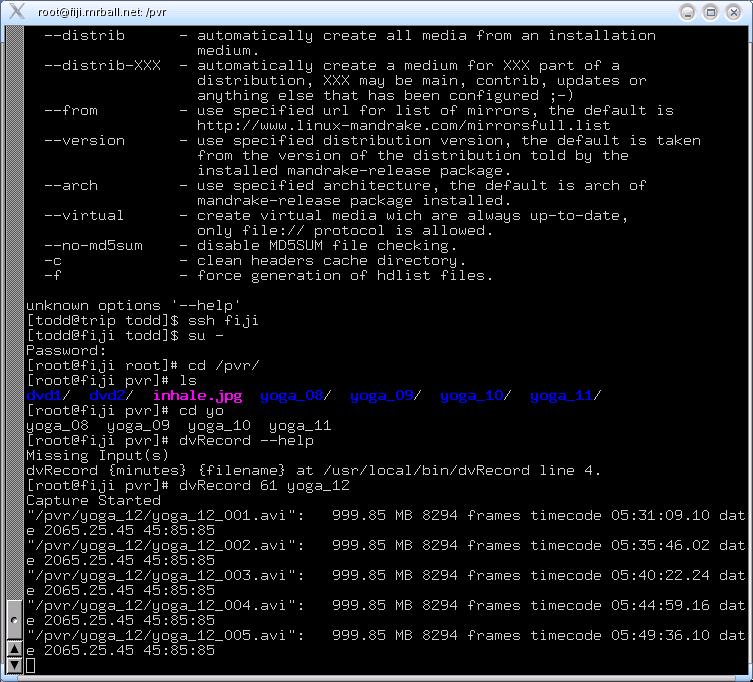Use dvRecord to capture the video. It takes two arguments:
-
# dvRecord {minutes} {filename}
(Script available in Section 8 of this document)
In my case, I'm dubbing a 60 minute show using the Canopus ADVC-100, so I run:
-
dvRecord 61 yoga_12
It will create a directory named /pvr/yoga_12. The first video file will be named yoga_12_001.avi, the second will be yoga_12_002.avi, etc. Each file will be 1 GB, approximately 4.5 minutes apiece. One hour of video will be a little over 13 GB in raw video. You need to be root to run this since it uses nice to set the priority. You can do this as a regular user too, but without the nice setting, you might get unsatisfactory results. Look at the sample in Fig 1 to see what a typical capture session looks like. When the capture session is finished change the ownership of the files to whatever user you want to do the rest of the steps as. Being root is not required for any further steps.
